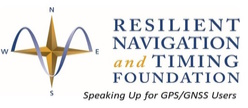“Inside GNSS” Thought Leadership Series September/October 2015
The diversity of APNT solutions is due to many reasons — each user group has systems to meet specific special needs of their mission.
SHERMAN LO
At one time, GPS was expected to supplant a wide range of navigation technologies in the world’s positioning, navigation, and timing (PNT) portfolio. But an unexpected thing happened along the way.
As GPS — and more recently, GNSS — moved from concept, to development, to reality, its vulnerabilities became more apparent, along with its remarkable qualities of accessibility, accuracy, and affordability. Interference to low-power GNSS signals, fear of spoofing attacks and intentional jamming, diminished performance in some operational environments — these and other factors have led policy makers and some user communities to reconsider their expectation of GPS universality and, instead, to seek alternative PNT (APNT) resources. In the United States, a 2004 presidential directive mandated creation of a backup system for GPS to ensure the uninterrupted provision of PNT services.
We called on Sherman Lo help us understand what is at stake in the search for APNT. Lo is a senior research engineer in the GPS Laboratory at Stanford University, where he earned his Ph.D. in aeronautics and astronautics. For the last several years, he has served as an investigator for the Federal Aviation Administration’s evaluation of APNT alternatives.
IGM: What are the leading functions/values/features being looked for in alternative PNT systems?
LO: This topic is a source of much discussion in the APNT community as there is not general agreement in several areas. I think the features needed from APNT are generally agreed upon: robustness, integrity/authenticity, and accuracy (timing or positioning).
However, a debate exists about what those things actually entail. For example, while it is clear that APNT must handle a GNSS outage, no consensus has emerged regarding the length of time and extent in area for which an outage must be managed. I think the differences of opinion come from several factors. First, there have been few major incidents of GNSS denial or spoofing. Second, the uses of and threats to PNT are evolving.
I think that the various stakeholders have different time horizons in mind for APNT. The PNT targets and threats in 2035 will be different than those today or 2025. The challenge with PNT (APNT or otherwise) infrastructure is that it takes time to build out, equip, and modify. It is not like consumer devices or software where we can count on rapid turnover or updates. We must think and plan for the future, sometimes far into the future, and get consensus on what is needed.
For example, FAA APNT currently needs to only provide about one-nautical-mile position accuracy. Hence, distance measuring equipment (DME) — either DME/DME or DME/DME with inertial reference unit (IRU) avionics — is sufficient. However, in the future airspace (2025 and later) as envisioned under the FAA Next Generation Air Transportation System (NextGen), reliance on GNSS and GNSS level performance will be greater and some APNT capabilities will need to improve — to perhaps 0.3 to 0.5 nautical mile accuracy along with better low-altitude coverage.
I suspect that similar issues face other industries such as telecommunications, where one-microsecond timing is sufficient for today but we may be talking about 100 nanoseconds or better in the near future.

